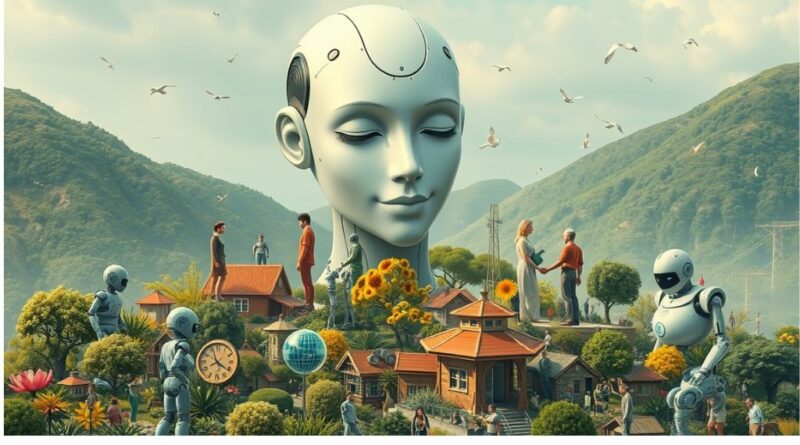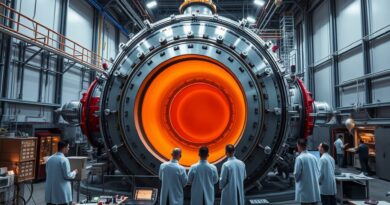The Potential for AI to Love Humanity: Sam Altman’s Vision
In the rapidly evolving landscape of artificial intelligence, one question looms large: Can we ensure that AI systems not only serve humanity but also “love” it? OpenAI CEO Sam Altman has made this aspiration a central tenet of his vision for the future of AI. While confident in the potential to imbue AI with pro-human traits, Altman acknowledges the uncertainty inherent in such an ambitious goal.
From Science Fiction to Reality: The AI Alignment Debate
The specter of an AI uprising, once confined to the realms of Isaac Asimov’s novels and James Cameron’s cinematic blockbusters, has transitioned into a pressing real-world concern. As AI technology advances, so too does the need for regulatory frameworks to address its ethical implications. What was once dismissed as speculative fiction is now a legitimate topic of discussion among policymakers, technologists, and ethicists alike.
OpenAI’s engagement with governmental bodies has been described by Altman as “fairly constructive.” He contends that the development of AI should ideally be a government-led initiative, given its profound societal impact. However, acknowledging the absence of such efforts, he asserts that the current trajectory of AI development as an American project is preferable to none at all.
Regulatory Hurdles and Public Safety Concerns
Despite growing awareness of the risks associated with AI, legislative progress remains sluggish. A notable example is California’s attempt to pass legislation holding AI developers accountable for catastrophic misuse of their technologies. Although the bill successfully navigated the state legislature, it was ultimately vetoed by Governor Gavin Newsom.
Prominent voices in the AI community have sounded alarms regarding the alignment of AI with human values. Geoffrey Hinton, often referred to as the “Godfather of AI,” expresses skepticism about achieving guaranteed safety. Similarly, Elon Musk, a key figure in OpenAI’s founding, frequently warns of AI’s potential to threaten human existence.
Bridging the Gap: Aligning AI with Human Values
Altman believes that contemporary AI architectures are conducive to alignment, making it feasible to prevent harm to humanity. His approach involves leveraging AI itself to engage the public in defining ethical guidelines. By deploying AI chatbots to converse with users about their value systems, Altman envisions creating a comprehensive understanding of societal priorities.
This method would involve extensive interactions with diverse populations, enabling AI to discern commonalities and reconcile differences. Through these dialogues, AI could distill a consensus on how best to promote collective well-being. Altman emphasizes the importance of understanding billions of individuals “at a deep level” to effectively tackle global challenges.
Superalignment Efforts and Leadership Changes
OpenAI maintains an internal team focused on superalignment, dedicated to preventing advanced AI from deviating from intended purposes. In late 2023, this team published research exploring methods where one large language model supervises another, ensuring adherence to safety protocols. However, significant changes occurred within the team earlier this year when leaders Jan Leike and Ilya Sutskever departed, citing concerns over OpenAI’s prioritization of product innovation over safety measures.
Leike voiced his apprehensions on social media, highlighting the dangers of developing machines surpassing human intelligence without robust safeguards. He criticized OpenAI for allowing safety considerations to take a backseat to commercial ambitions. In response, Altman expressed gratitude for Leike’s past contributions while reiterating OpenAI’s commitment to safety.
Conclusion: Toward a Harmonious AI-Human Partnership
As AI continues to permeate various aspects of daily life, the imperative to align it with human interests grows ever more urgent. Sam Altman’s vision of cultivating AI that not only serves but cherishes humanity represents a hopeful yet challenging endeavour. By integrating public input and fostering transparent dialogue, there is potential to steer AI development toward a path that benefits all of society. The journey ahead will require unwavering dedication to ethical principles and collaborative efforts across disciplines to realize this transformative vision.



